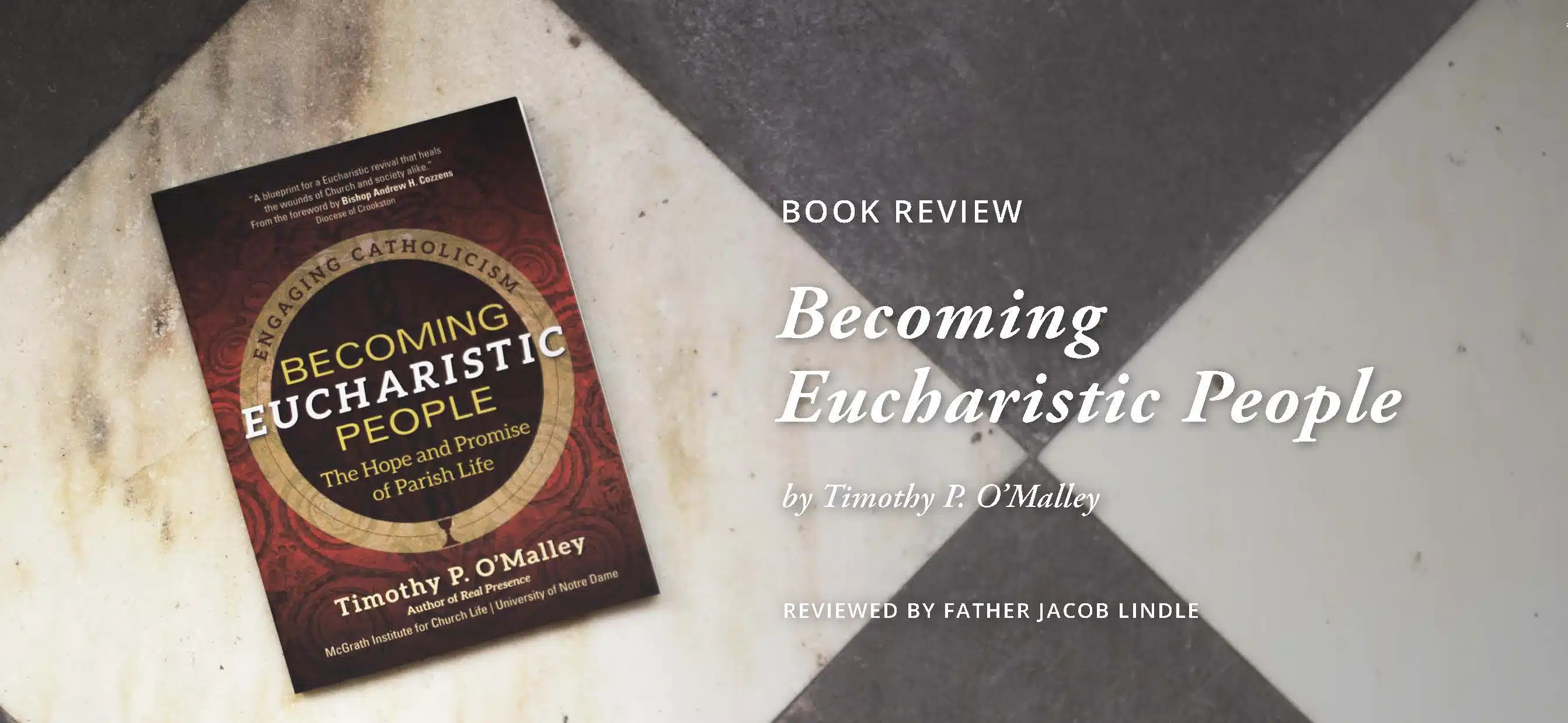Becoming Eucharistic People

I’m usually allergic to titles like “Becoming Eucharistic People.” While the title is beautiful, as with a nice spring flower, I have an instinctual adverse reaction against it. Why? Because I’ve often seen such titles on shelves headlining handfuls of dust. What in the world does the adjective “Eucharistic” even mean with respect to people?
Happily, my cover-judgment was both rash and entirely wrong. This book is not mystically abstract, but relentlessly, and even uncomfortably, concrete: it is an extended refusal to let the doctrine of the Eucharist remain separate from any facet of our existence—the flesh and blood of our personal lives and communities. Becoming Eucharistic People is one long meditation on the consequences of the God who tabernacled among us in the Incarnation and who continues to set up His tent with us in the Eucharist.
So back to my initial reservation: what does the adjective Eucharistic mean with respect to people? Well, as the people who pattern their lives on Christ are called Christian, so too can the people who pattern their lives on the Eucharist be called Eucharistic. God, who is love, revealed Himself totally in the person of Jesus Christ. Jesus revealed God most radically in His passion, death and resurrection. And before Jesus was handed over to be crucified, He handed Himself over in the Eucharist. The creation-saving, death-defeating love which He revealed to the world on Good Friday and Easter Sunday was made always-accessible to us on Holy Thursday. Our whole lives, and indeed the whole world, are to be patterned on and formed into this love, which Love Himself patterned for us in the Eucharist.
In this book, Professor Timothy O’Malley walks his reader through this process of formation into love, from context to vision to practical steps. O’Malley begins by recognizing the context of our polarized, wounded and disaffiliated society, then casts his vision by describing the shape and contours of a Eucharistic culture of communion. With this goal for a culture in mind, he guides the reader through a method of self-examination and discernment about how to accomplish the what and the why. He has two chapters addressing Eucharistic formation “inside the walls”: we must cultivate authentic Eucharistic reverence where we are “joyfully serious” in our worship of the living God; and we must foster an integrated and lifelong catechesis which unites memory, understanding and desire. After refuting any myth of a privatized Catholicism, O’Malley moves “outside the walls,” seeking the restoration of a Eucharistic popular Catholicism that unites liturgy and devotion and the cultivation of a Eucharistic solidarity that unites Catholic Social Teaching and the Eucharist. O’Malley does not leave one crack or crevice of the cosmos unformed by the Eucharistic self-giving love of Jesus.
The underlines and margin notations in my copy of this short book are nearly out of control. So much more can be said about Becoming Eucharistic People, but I don’t want to read it for you. If you really want a Eucharistic revival in this country, in this archdiocese, in your parish and in your life, you could start by reading this book and inviting a neighbor in your parish to do the same.
Father Jacob Lindle is a priest of the Archdiocese of Cincinnati. He is currently assigned as the parochial vicar for the NE-1 Family of Parishes in the northern part of the archdiocese.
Becoming Eucharistic People by Timothy P. O’Malley; Ave Maria Press. 160 pages. May 2022. $14.95.
This article appeared in the February 2023 edition of The Catholic Telegraph Magazine. For your complimentary subscription, click here.













